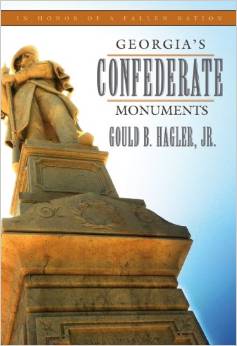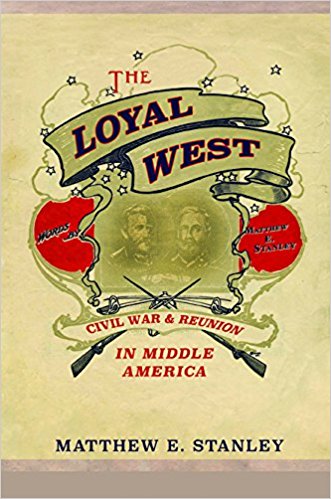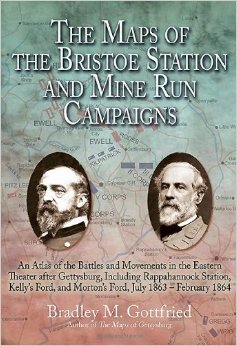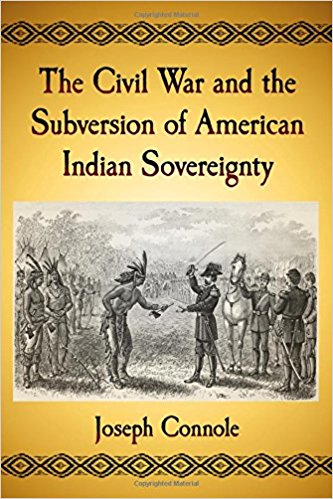Defeating Lee: A History of the Second Corps, Army of the Potomac by Lawrence A. Kreiser, Jr. Indiana University Press, 2011. Cloth, ISBN: 0253356164. $34.95.
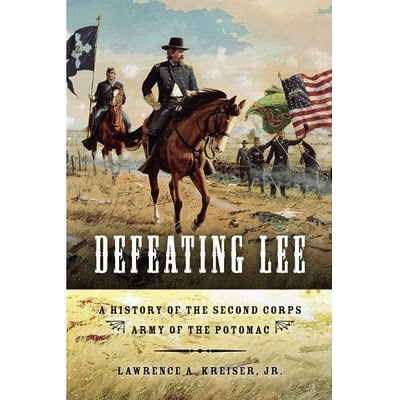 From the slaughter in the West Woods to the murderous slugfest at Spotsylvania’s Mule Shoe, the Second Corps of the Army of the Potomac witnessed some of the most horrific combat of the Civil War. It suffered the highest losses of the nearly forty-five army corps the Union organized during the four-year conflict. Of the estimated 100,000 men who served in the Second Corps, approximately 40,000 were killed, wounded, captured, or listed missing. Yet the Second Corps earned distinction as one of the war’s elite fighting units, and it arguably emerged as the Union’s most famous corps. Some of the Army of the Potomac’s most notable regiments served in the Second Corps, including the storied 5th New Hampshire and 1st Minnesota, as well as the famed Irish and Philadelphia Brigades. In addition, some of the most well known federal officers were associated with this illustrious organization, including Winfield Scott Hancock, Edwin Sumner, John Sedgwick, Oliver Howard, John Gibbon, Francis Barlow, Thomas Meagher, Edward Cross, Nelson Miles, and a host of other notables.
From the slaughter in the West Woods to the murderous slugfest at Spotsylvania’s Mule Shoe, the Second Corps of the Army of the Potomac witnessed some of the most horrific combat of the Civil War. It suffered the highest losses of the nearly forty-five army corps the Union organized during the four-year conflict. Of the estimated 100,000 men who served in the Second Corps, approximately 40,000 were killed, wounded, captured, or listed missing. Yet the Second Corps earned distinction as one of the war’s elite fighting units, and it arguably emerged as the Union’s most famous corps. Some of the Army of the Potomac’s most notable regiments served in the Second Corps, including the storied 5th New Hampshire and 1st Minnesota, as well as the famed Irish and Philadelphia Brigades. In addition, some of the most well known federal officers were associated with this illustrious organization, including Winfield Scott Hancock, Edwin Sumner, John Sedgwick, Oliver Howard, John Gibbon, Francis Barlow, Thomas Meagher, Edward Cross, Nelson Miles, and a host of other notables.
In Defeating Lee, Lawrence Kreiser, an Associate Professor of History at Stillman College, presents a concise, well-written history of this noted corps. Within the vast realm of Civil War historiography, corps histories are rare. Since the conclusion of the war, there have been only six corps histories — all of which were written by veterans in the immediate post-war years. One of these six was Francis Walker’s 1887 A History of the Second Army Corps in the Army of the Potomac. Because of this and because of the fame many Second Corps organizations and officers still enjoy, it is hard to argue, as Kreiser does, that the Second Corps has been neglected. Still, Kreiser does admirably in documenting the organization of the corps and in narrating their actions throughout the war. Presenting the wartime history of so large an organization as a corps in just 250 pages of text is a very difficult thing to do. It necessarily means that battle analyses must be brief, with only a dozen or so pages devoted to each of the major engagements in which the Second Corps fought. Although Kreiser does well in presenting these concise campaign and battle narratives, the greatest value of this work is in his examination of the day-to-day machinations of an army corps.
Kreiser relies heavily on first-person accounts to explain why the men enlisted and why they continued to serve, even in the face of monotonous camp life and horrific combat; in doing so, he gives us good insight into the minds of Union troops. Kreiser also demonstrates that the soldiers of the Second Corps developed strong unit cohesion and great pride in belonging to a hard-fighting, dependable organization. Though this level of attachment or pride never equaled that which the soldiers felt toward their regiments, Kreiser nevertheless demonstrates that soldiers who fought under Sumner, Couch, Hancock, and Humphreys did develop a strong corps identity.
However, the sense of pride shared by members of the Second Corps was in no way unique within the army, and it was not any stronger than the ties that welded soldiers of other corps to their own organizations – two themes that are often implied in this book. Indeed, the weakness of Defeating Lee is the author’s attempt at making the Second Corps unique, or in building up its reputation too often at the expense of other army corps. A few examples will suffice. At Gettysburg, the Army of the Potomac’s First Corps was “routed” and the Third Corps “nearly destroyed.” Kreiser argues that the casualties sustained by these two corps deterred the survivors from “expressions of corps pride” or at least “muted” them (125). Yet after the carnage that was Antietam, where the Second Corps suffered tremendously in the West Woods and in its assaults on the Bloody Lane, there was no such muting of corps pride; indeed, there was no demoralization because many of the soldiers “believed the battle at Antietam a Union victory,” and because they “believed that they had fought well, reinforcing their pride in their units and their Second Corps” (56). Kreiser provides no sources or explanation as to why similar sentiments were not felt by the soldiers of the First and Third Corps following Gettysburg, despite casualty rates comparable to those suffered by the Second Corps at Antietam.
Even more questionable is Kreiser’s argument that after Antietam, “battlefield controversy was the stumbling block to a strong unit cohesion” within the Ninth Corps. Kreiser argues that “hard feelings … simmered between McClellan and Major General Ambrose Burnside over why the Ninth Corps had moved with excruciating slowness in attacking the Confederate right around Antietam Creek and Sharpsburg.” The suggestion that the Ninth Corps did not already possess strong unit cohesion must be dismissed, for one had already developed among the proud soldiers of this “wandering corps.” And by no means did the Ninth Corps move with excruciating slowness at Antietam; rather, faced with a great challenge and against the most difficult terrain, Burnside’s men did admirably in carrying out their assigned orders, which were to provide a diversionary demonstration against Lee’s right flank while the main attack unfolded against Lee’s left. Finally, if there did exist any hard feelings between McClellan and Burnside—which is debatable—it was in not in evidence immediately after Antietam; instead, it only surfaced late the following summer when McClellan filed his report on his tenure as army commander, a report so at variance with his immediate after-action report at Antietam, written on October 15, 1862, that it is clear McClellan was seeking a scapegoat in Burnside for not having achieved greater results at Antietam. Regardless, if any hard feelings did exist between McClellan and Burnside, it is not clear how this would have hindered strong unit cohesion among the soldiers of the Ninth Corps. What is certain, though, is that George McClellan and Edwin Sumner, the first commander of the Second Corps, were frequently at odds with each other. Hard feelings between these two headstrong generals were often present, and yet nowhere in the text does Kreiser argue that this proved to be a stumbling block in the development of strong unit cohesion within the Second Corps.
There can be no denying that the Second Corps witnessed some of the most horrific combat of the Civil War, serving with the Army of the Potomac from the Seven Days through Appomattox. In Defeating Lee, Kreiser presents a good, succinct account of its wartime service and paints a compelling portrait of the men who served in its ranks. Kreiser’s narrative is fast-paced, and his writing style is clear and easy to follow. Kreiser presents the good with the bad, describing the corps’ triumphs and its defeats. And for these reasons, this book is recommended to anyone interested in the war’s Eastern Theater or in the motivations and mindsets of Civil War soldiers. However, it must be remembered as one reads through these pages that the corps identity felt by the soldiers of the Second Corps was not any stronger than that which was felt by many other Boys in Blue. Although the Second Corps certainly played a role, these soldiers were not alone in defeating Lee.
John Hoptak is the author of Confrontation at Gettysburg: A Nation Saved, A Cause Lost (2012).

